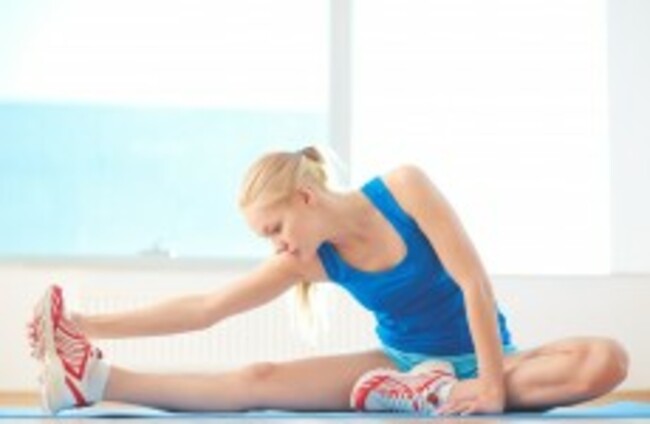EVER WONDERED HOW flexible you are? How good are you at reaching for your toes? What about those groins?
Flexibility is an essential part of overall fitness and well-being but it’s one of the most overlooked aspects of it. Why? Because it takes more time and the benefits are not as obvious as big biceps, a six-pack, a ridiculous ability to squat huge weight and so on.
We’re going to shine a little light on flexibility now and with a little luck, we’ll show you up with these two tests. Are you brave enough to try them?
There is huge variability in testing for flexibility, it must be said. Like for example, in testing the flexibility of one’s calf muscles, little consideration is given to the various calf lengths, so results can be skewed. Age and gender are two other variables.
But these two tests are seen as the benchmark in terms of consistency. So give it a try and be prepared to be shamed.
1. The V-sit and reach test (to measure lower back and hamstring flexibility)
What you need: a tape for marking the ground, a marker or pen, and ruler or measuring tape.
Step 1 With your shoes off, sit on the floor and spread your legs one foot apart. Use a ruler if you need to.
Step 2 Using a marker, draw a straight line joining the heels of your feet. Position yourself perpendicular to this. Your heels at the line. Your knees must be flat and your legs straight.
Step 3 Overlap your hands at the thumb with the palms facing down to the floor.
Step 4 Lean towards the line and reach as far as you can, keeping the back of your knees on the floor and your toes pointed up. Do this a few times, reaching as far forward as you can and holding at the top of the stretch.
Step 5 On the third stretch you get a partner to place a ruler at the base of the line, facing in the same direction you are. Resist the urge to jerk the movement. This gives a false reading and you risk injury.
Step 6 record the distance you stretched to beyond the line.
Scoring The score is recorded to the nearest centimetre as the distance before (negative) or beyond (positive) the baseline. But men and women are different, believe it or not. (And men, we are not gonna win this one, unfortunately.)
Here’s the scoring chart;
MEN
Super: +27cm
Excellent: +17cm to +27cm
Good: +6cm to +16cm
Average: 0cm to +5cm
Fair: -8cm to -1cm
Poor: -20cm to -9cm
Very poor: – 20cm
WOMEN
Super: +30cm
Excellent: +21cm to +30cm
Good: +11cm to +20cm
Average: 1cm to +10cm
Fair: -7cm to 0cm
Poor: -15cm to -8cm
Very poor: – 15cm
How did you do?
2. Groin test (to measure the flexibility of your abductor muscles – the ones that open your legs)
What you need: A ruler or a measuring tape.
Step 1 Sit on the floor with your knees slightly bent, your feet flat on the floor and legs together.
Step 2 Let your knees drop sideways as far as they’ll go while keeping your feet closely together. The soles of your feet should be together and facing each other.
Step 3 Hold on to your feet with both hands, and pull you ankles as close to your body as possible.
Step 4 Measure the distance from your heels to your groin. This is where we find out what we’re looking for.
Scoring: Use this table to convert the score measurement to a rating.
If the distance is…
5cm – excellent
10cm – Very good
15cm – Good
20cm – Fair
25cm – Poor.
Remember not to jerk or bounce!










Ripped the seat of my pants on the V-Sit and unleashed the beast. It unfurled 7 inches past the line. Does that count?
We really need to take care while building muscles because it can take away our flexibility.I we don’t give importance to flexibility we will feel weird. fromdeeptothesurfaces.com